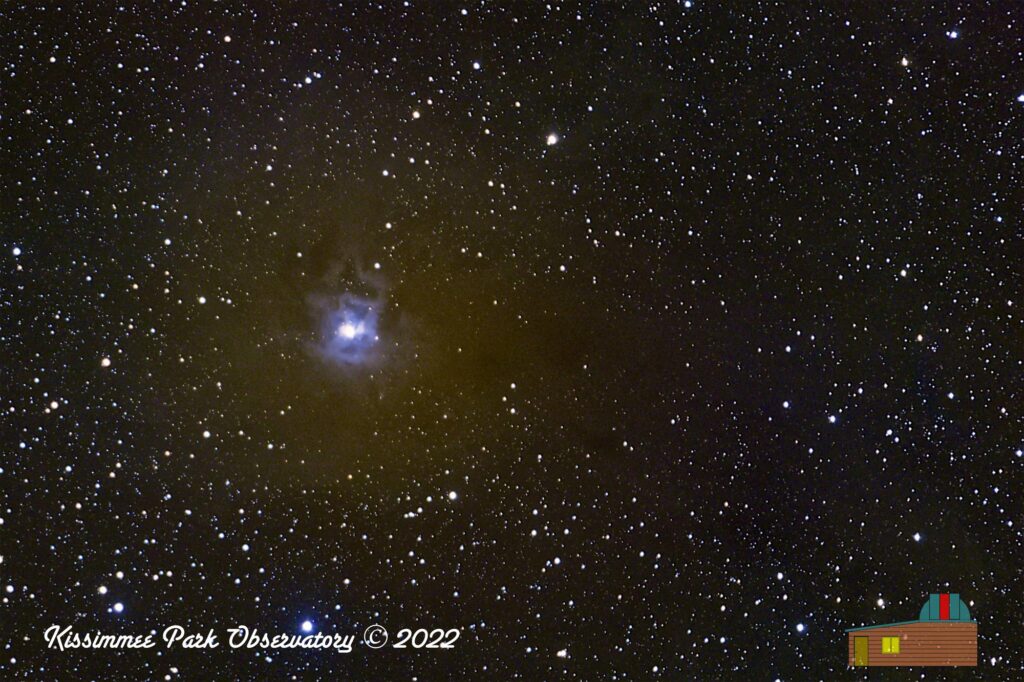Here are NGC 7023 and LBN 487, collectively also known as the Iris Nebula, is one of the most well-known reflection nebulae in the night sky. Located in the constellation Cepheus, the light from this nebula – which it receives from a nearby hot, young star – reveals the details of its intricate structures. This complex lies some 1,300 light years from earth, so the light that we see emanating from it has spent well over a millennium traveling the interstellar void.
At first glance, NGC 7023 looks like a round cloud of gas and dust. However, when observed in deeper detail it reveals a universe of its own – from dark, cold clouds of dust to bright, glowing gaseous clouds. These dark and light tones create a rich contrast in this celestial canvas.
Most of the dust in the Nebula is arranged in a latticework of filaments surrounding its central star. This beautiful filamentary structure has been the source of fascination for many astronomers, prompting a range of theories about its origin.
The most popular explanation of the dark nebula surrounding the core of the region is that gravity from the star at the heart of NGC 7023 is acting like a vacuum cleaner and pulling dust and gas from the area around it. This material is then distributed in a density-wave pattern that creates the filaments we see in the Nebula.
Aside from its filamentary structure, the Nebula is also home to contrasting shapes, unveiling a marshmallow-like bubble in the bright region near the star. Scientists suggest this structure is likely the result of a shockwave that triggers the collapse of dense regions in the cloud material.
Most of these fascinating features can be seen in an amateur telescope of 8” of aperture or more. Stable seeing and dark skies are important to be able to resolve its intricate details.
Overall, NGC 7023 is an intriguing celestial sight that can unveil its secrets to those who look deeply. For those with an amateur telescope and a clear night sky, this magnificent nebula is sure to spark amazement.
Click on the image to view a larger version that you can explore.
Image Info
- Imaged from Key West, Florida.
- Camera : ZWO ASI1600MM Pro
- Lens: Canon 100-400 f/5.6L lens, set to 387mm
- Mount: iOptron SmartEQ Pro
- Red: 12 subframes of 300s = 60 min integration
- Green: 12 subframes of 300s = 60 min integration
- Blue: 12 subframes of 300s = 60 min integration
- Luminance: 51 subframes of 300s = 255 min integration
- Hydrogen Alpha: 12 subframes of 300s = 60 min integration
- Total integration time: 435 min = 7.25 hours.
- Captured via ASIAir Pro automation
- Optical tracking via ASIAir automation, currently using ST4 mount control via the ASI120MM-S guide camera
- Separate channels stacked and HaLRGB integrated in Astro Pixel Processor, and processing for light pollution sky fog removal
- Image cropped, stretched, and noise processed in Nebulosity.
- Final processing in Aperture
- Annotations done in PhotoShop

